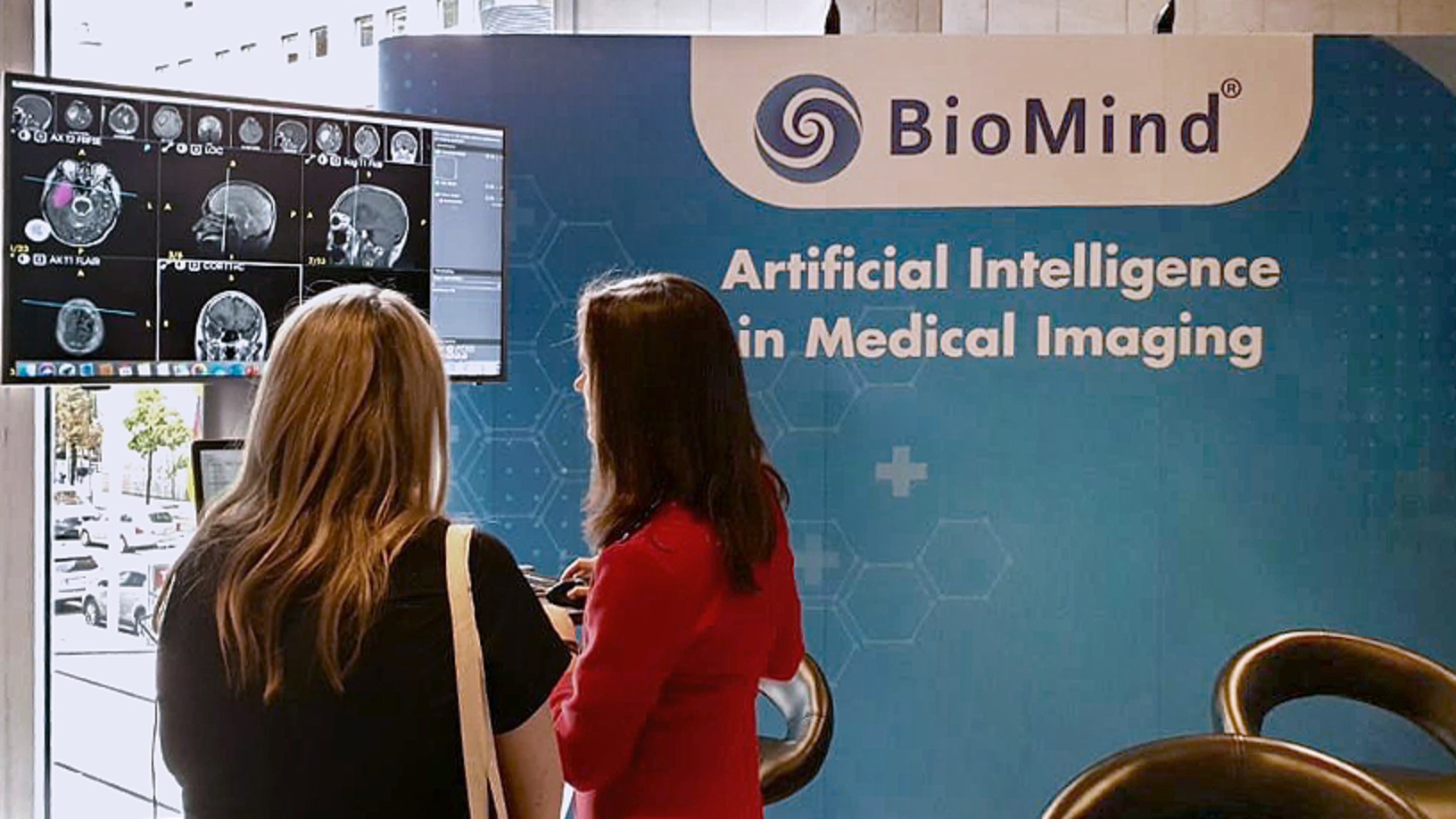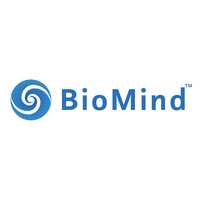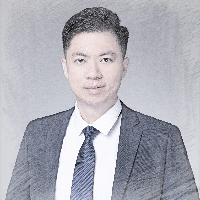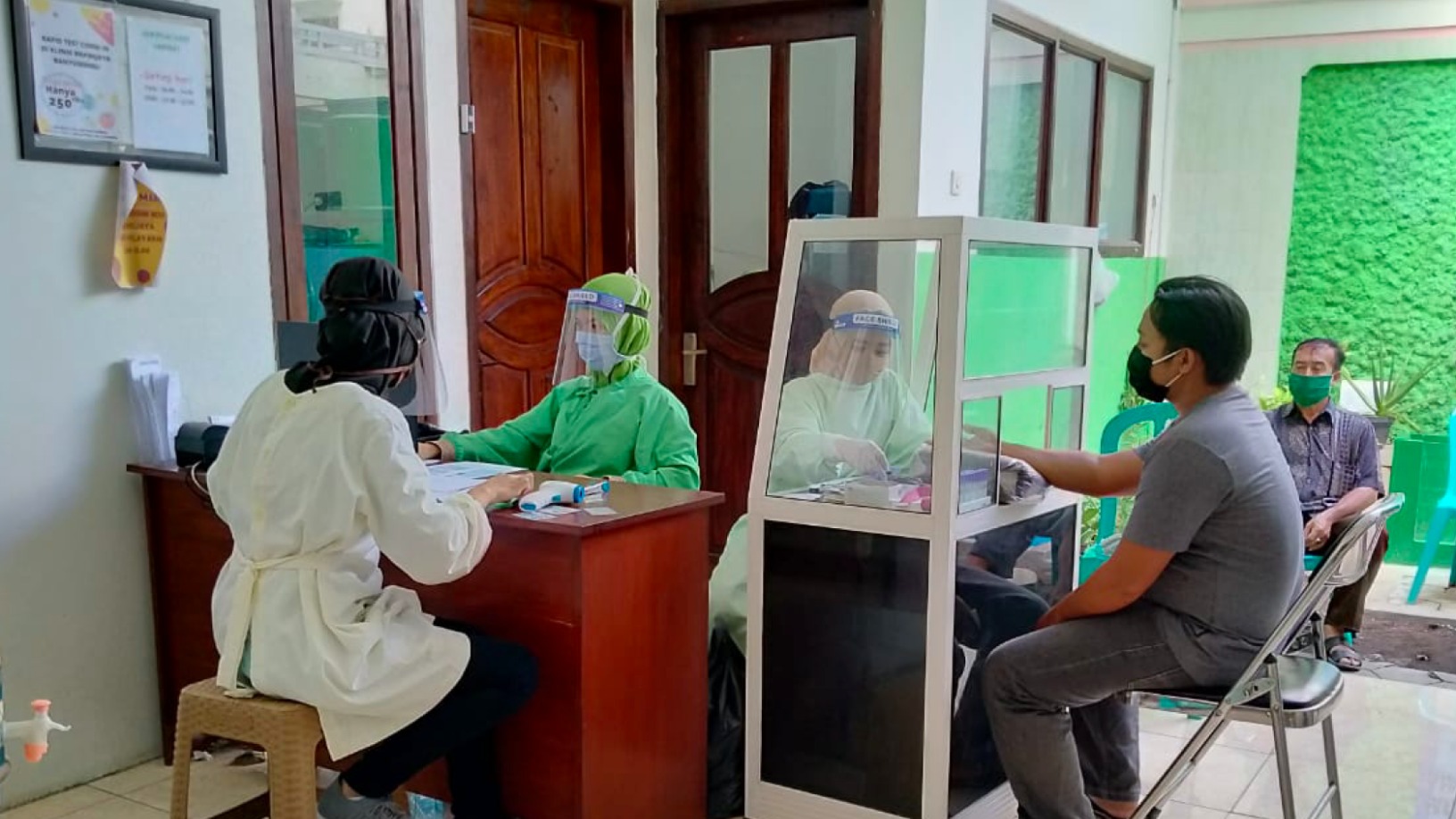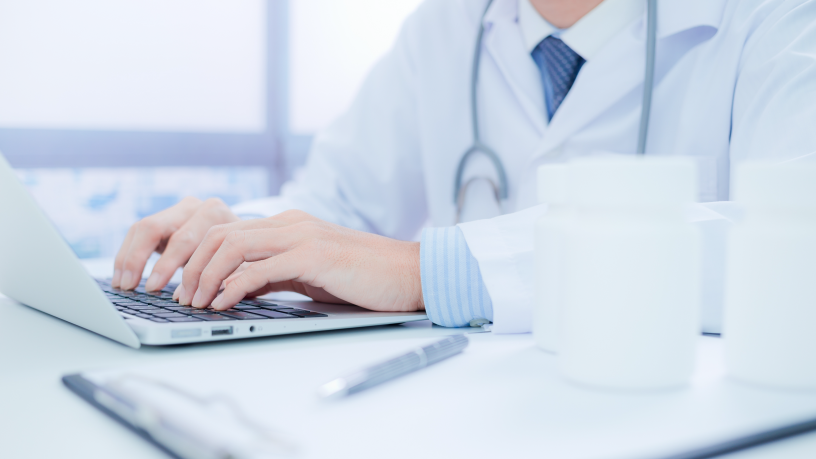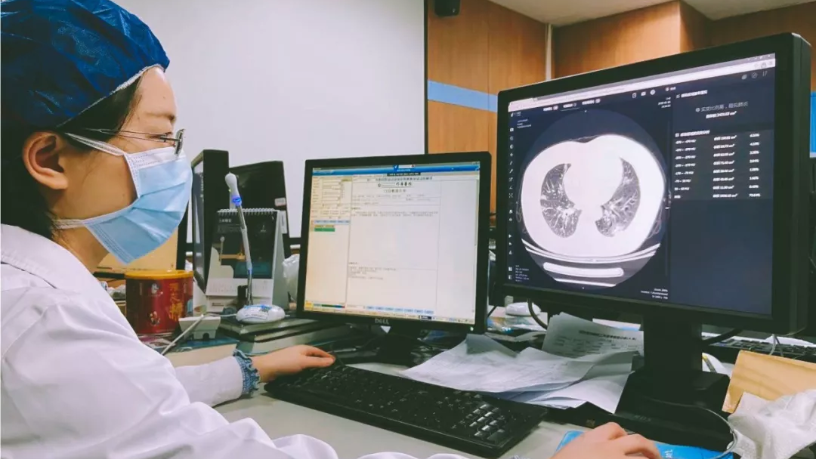During the coronavirus pandemic in February, Beijing-based medtech BioMind managed to train its AI-diagnostic platform to identify Covid-19 symptoms using CT scans of a patient’s lungs. Within a month, the service was made available free to all Covid-designated hospitals in China.
“Many AI companies working on medical images are deploying AI specific to one disease or one body part. If we want AI to really help doctors, we couldn’t limit it like that,” said Liang Weimin, chairman of BioMind. “In the future, we want BioMind to serve in radiology department, as well as other clinical departments like neurology in hospitals.”
BioMind’s diagnostic imaging system for neurological disorders had already obtained the CE Marking registration from the EU in 2018. With approvals also obtained from Singapore's Health Sciences Authority (HSA) and China’s National Medical Products Administration (NMPA), BioMind is gearing up to launch its versatile AI-medical assistants in Asia and Europe.
Better and faster than humans
In 2018, BioMind won 2–0 against elite human doctors in a contest billed as the world’s first competition between AI systems and human doctors. BioMind was able to diagnose brain tumors with an accuracy of 87% compared to 66% by the doctors. The AI-based medical assistant also achieved 83% accuracy, compared to 63% by doctors, in predicting brain hematoma expansion by using CT and MRI scans. Each diagnosis was made within 15 minutes, half the time needed by human doctors.
BioMind was only made possible by new developments in computer vision and AI. “When it comes to application, the most valuable part of deep learning lies in image recognition, and what’s special about medical service is that most of the diseases could be diagnosed through reading images,” said BioMind CEO and founder Raymond Moh.
Although training an algorithm to recognize objects in images had already become commonplace in deep learning, the training of AI to recognize medical images is a lot harder with special challenges to be overcome.
“Unlike natural objects, there’s insufficient open-source data to train an algorithm in medical images,” said BioMind CTO Wu Zhenzhou. “The property rights regarding medical data are complicated. It’s not like we can just copy the images and take them out of the hospitals.”
To make the matter more complicated, not any data can be used either. “AI is like a dumb person. It can only learn from massive data, not from any set of rules,“ said Wu. The learning outcome is dependent completely on the quality of the data.
BioMind was born in Beijing
It all started when Moh, who originally established Hanalytics Pte Ltd in Singapore, decided to look further afield for medtech partners in China. In December 2017, Hanalytics partnered with Beijing Tiantan Hospital to set up CNCRC-Hanalytics Artificial Intelligence Research Centre for Neurological Disorders (CHAIN) in Beijing, billed as the first research center of its kind in the world.
Beijing Tiantan Hospital is one of China’s top Class III hospitals, especially well-known for treatment of neurological disorders. Each year, more than 300,000 patients from all over China would travel to the Beijing hospital to seek treatment for some of the most bizarre and difficult neurological diseases. The doctors would perform 8,000–10,000 operations annually on brain tumors alone.
Both parties share the same passion to develop AI solutions for clinical use. “It’s like chemistry between lovers. We just hit it off,” said BioMind CEO for Greater China Li Jingyu. “At the time, each team was given a test. BioMind finished the test very quick and with high quality results.”
The next challenge was to annotate the data. “Unlike natural objects, it takes training and professional knowledge to recognize medical images,“ said CTO Wu. The BioMind team spent 3–4 months training the AI to learn to read medical images.
The annotation test was a challenge for both engineers and doctors. “At first, the doctors didn’t understand how algorithms work. Later, we started to send out at least one doctor to BioMind’s team to focus on each disease. By working together, we made some very specific changes to the algorithms which produced some obvious progress,“ said Li Hao, VP of Beijing Tiantan Hospital.
In June 2018, a new company Beijing BioMind Technology was established in China. BioMind was launched as the flagship brand, securing CE Marking from the EU for BioMind’s first AI-powered diagnostics device. Today, BioMind can be used to diagnose neurological diseases with 90% accuracy, similar to that of a senior physician. BioMind actually surpasses the performance of human doctors for the prediction of hematoma expansion (HE).
“While human doctors may think the amount of bleeding in a brain looks similar in two image results, the AI can compute the exact difference. The subtle difference can mean either the brain is still actively bleeding or the bleeding has stopped, leading the doctors to make very different medical decisions,” said Dr Shiyuan Liu, professor and chairman of the Department of Radiology in ChangZheng Hospital in Shanghai.
Uneven distribution of medical resources
BioMind is also working with other top hospitals to help more people from lower-tier cities and rural areas to access specialist treatments that are only available in big cities. Using data from 301 hospital, BioMind has trained its algorithms to spot breast cancer by using MRI results. The AI-medical assistant can help diagnose over 100 diseases by reading medical images.
The company is also developing and testing other AI solutions like the Tianze support services system. Unlike BioMind that can only provide assistance based on radiology results, Tianze can help doctors through the whole process of diagnosis, treatment and prognosis. “Tianze is like a doctor plus a library,” according to a medical expert on the Summit Forum of Chinese Research Hospital 2019. Tianze can also provide treatment suggestions based on the analysis of the medical images and the patient’s medical conditions with reference to the latest research papers and medical guidelines.
In China, the amount of medical imaging data is estimated to increase by 30% each year. The number of radiologists will only grow at around 4% annually, with many based in larger cities. BioMind can help to solve the shortage of medical professionals.
“It’s quite a lot of work for doctors to go through the CT/MRI images using their naked eye to analyze the results and write reports for every case,” said Moh. “BioMind can be a useful doctor’s assistant by analyzing 3,000–4,000 images automatically, identifying the medical problems and producing reports for the doctors to review. As a result, doctors can save time and be able to communicate more with the patients. AI can save 30–50% of a doctor’s workload.”
For local hospitals in lower-tier cities, it’s hard to recruit a good doctor. “Our intention is to scale BioMind to bring the best medical resources available to lower-tier cities. AI can help normal people to easily access those resources,” said Li Jingyu.
